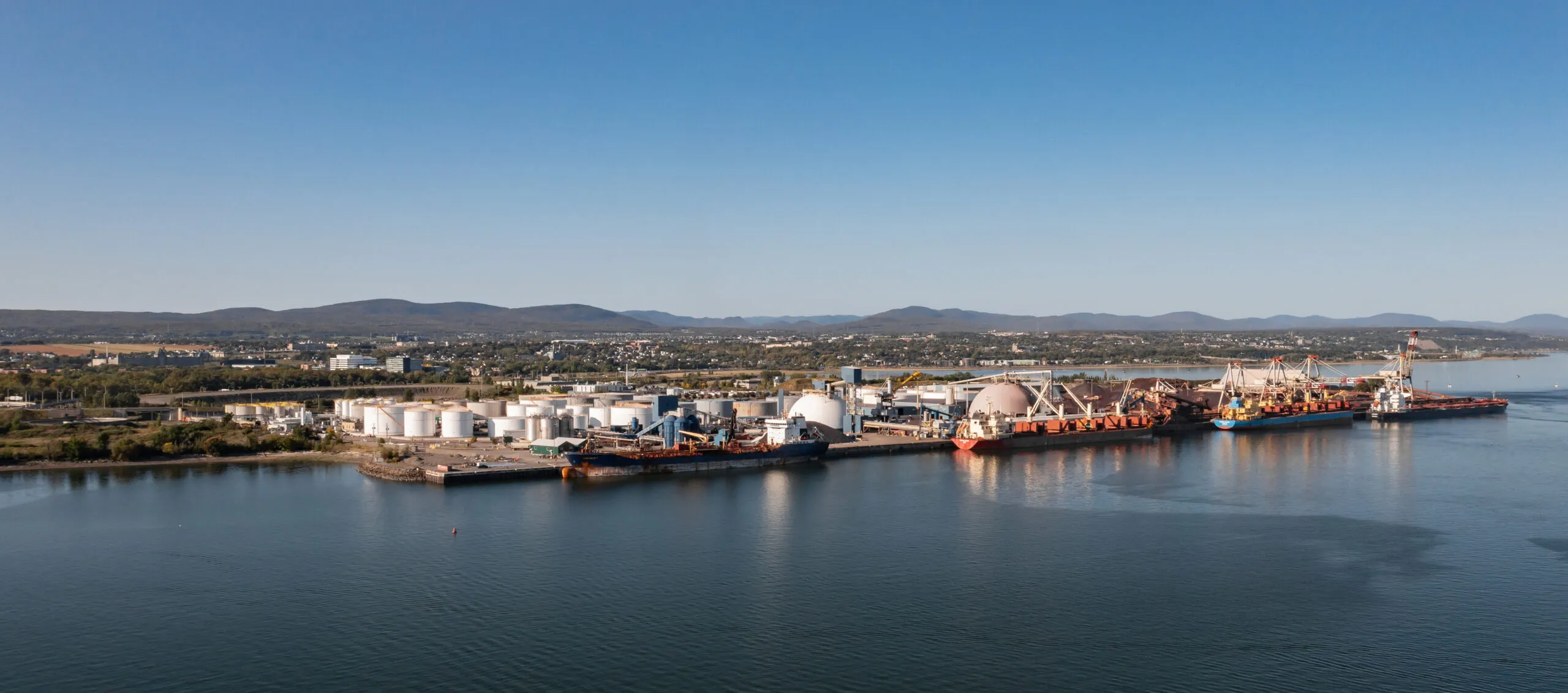I’ve been involved in the maritime industry for many years now. I knew the board strokes, the inner workings, the faces. But it’s only since taking the helm at the Port of Québec that I’ve begun to grasp its full depth – all its complexity, its strengths, its challenges and grey areas.
I’ve learned a lot through the people I’ve met and the discussions I’ve had with partners, citizens, elected officials, and passionate workers. The Québec Maritime Sector Conference (Assises québécoises du secteur maritime) has also provided an opportunity to take a pragmatic look at the industry, through the latest report on maritime shipping in Québec, L’État du transport maritime du Québec. As we took stock, we saw not only how omnipresent this industry is on the St. Lawrence, but also how much of a strategic role it plays in our supply chains, our economy, and the development of our region. And yet, despite this constant presence, the industry remains poorly understood. It’s a critical part of our day-to-day, but it’s developing in the background, well out of the spotlight. I was struck by this stark contrast between its actual role and the way it’s perceived.
I’ve also realized that this industry is at a turning point. It’s time for it to transform, to reinvent itself, to meet new expectations. To be more transparent. To better align with climate imperatives. To become a better neighbour. In short, it’s time to shift towards a more open, sustainable, and understandable industry.
An Industry on the Move
The maritime sector, like the river it travels, is in constant flux. It’s moving forward and forging a new identity, with massive projects to reduce GhGs, transition to cleaner energies, modernize infrastructure, and integrate greener technologies, among others. These transformations are compounded by turbulence from other areas, like geopolitical tensions and shifts in world trade patterns.
To fully face these challenges, major investments are a must. Not to build concrete cathedrals, but to anchor a vision: one of a resilient, competitive industry that can generate tangible spin-offs like sustainable jobs, business opportunities, and better quality of life.
These efforts, however, cannot be made alone. They must be part of a concerted approach where private initiatives align with public priorities and decisions are based on a complete understanding of regional realities. This is where a blind spot comes to light; despite its strategic importance, the maritime industry remains surprisingly understudied on a regional scale. There are simply not enough analyses to identify the industry’s long-term economic spin-offs, tangible impacts on communities, or contributions to our self-sufficiency. This lack of information prevents people from recognizing its value – both visible and invisible – and limits our collective ability to plan, prioritize, and innovate.
The maritime industry doesn’t just move cargo: it carries an essential part of our future and our collective autonomy.
A Sector That Generates Visible and Invisible Wealth
The maritime industry is more than just your stereotypical cog in the wheel. It supports thousands of jobs, supplements public revenues, and serves as a powerful driver of regional development. As market diversification becomes more and more essential, its role is more strategically important than ever.
The Port of Québec connects local businesses to the wider world. It lets them free themselves from dependencies, open new markets, and become more autonomous. Naturally, this wealth is not simply economic, either.
It’s also human. It’s the opportunity for a local entrepreneur to see their products make it to Europe. It’s the potential for a young worker to build a meaningful career. It’s the chance for a community to shine on the international stage. This type of wealth may not be as flashy, but it’s no less valuable for it.
An Essential Actor Behind the Scenes
One of the biggest things I’ve found since my arrival is that people genuinely want to know more. Not necessarily so they can oppose, but so they can understand. What goes into port activities? How do we ensure their safety, transparency, and sustainability? This desire to be informed is healthy and invigorating.
It also resonates strongly with people in the industry. I’ve been truly touched by their passion, their acceptance, their sense of duty. Managers, workers, partners: everyone has welcomed me with generosity and a shared desire to do better. Explain better. Collaborate better. Become a more integral part of the city.
The maritime industry doesn’t often make the headlines. It’s quieter, working in the background. And yet, it’s everywhere. In our fuel, our food, our building materials. It’s an invisible, never-ending current that brings the world into our everyday lives.
As supply chains are threatened and food and energy self-sufficiency become paramount, this role is becoming more important than ever. The Port of Québec acts as a gateway to other markets. It’s an alternative in the face of political upheavals and a solution for companies to better expand their reach, better withstand, and better prosper.
It’s not just a matter of tonnage. It’s a matter of presence. Resilience. Collective intelligence. The maritime industry is a cornerstone. A support for our regional economies. A bridge between our region and the rest of the world.
– Olga Farman
